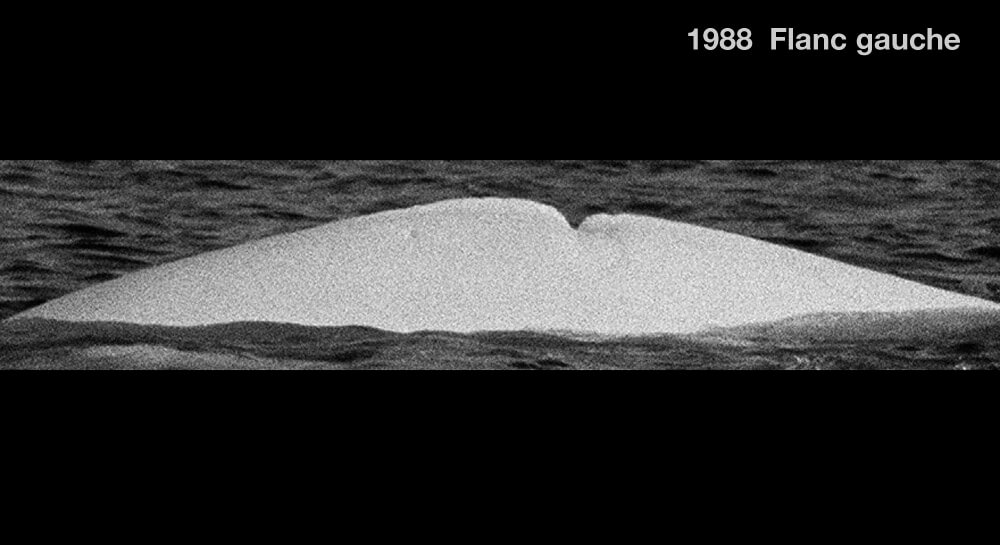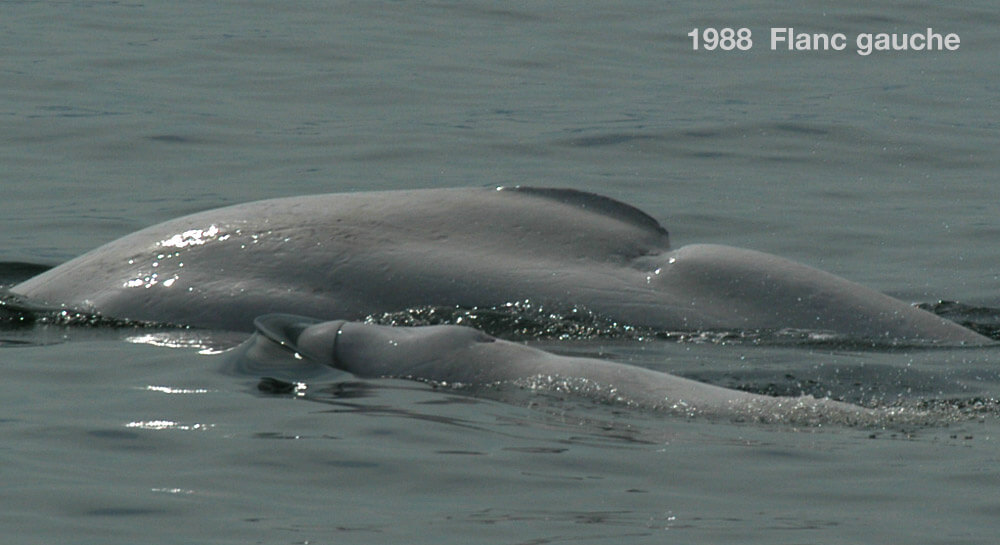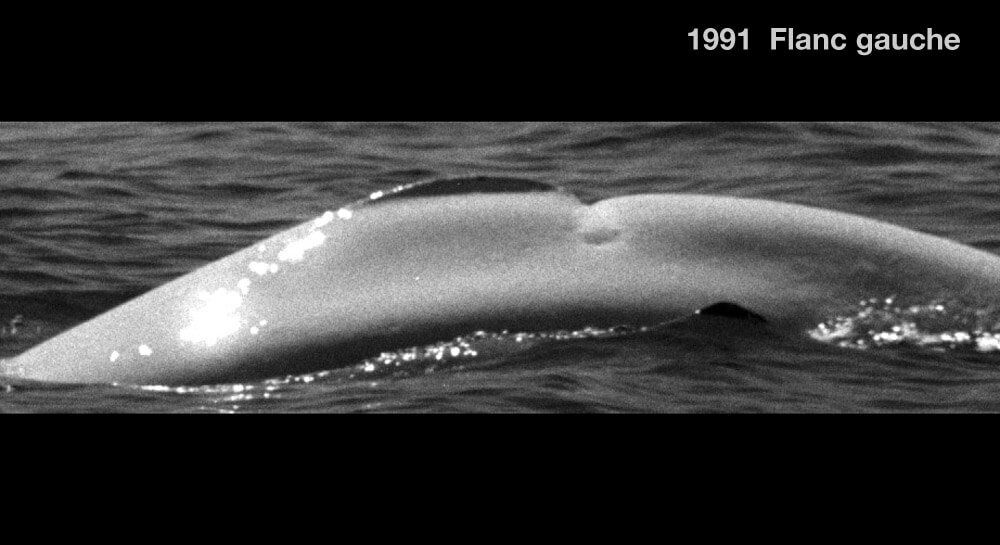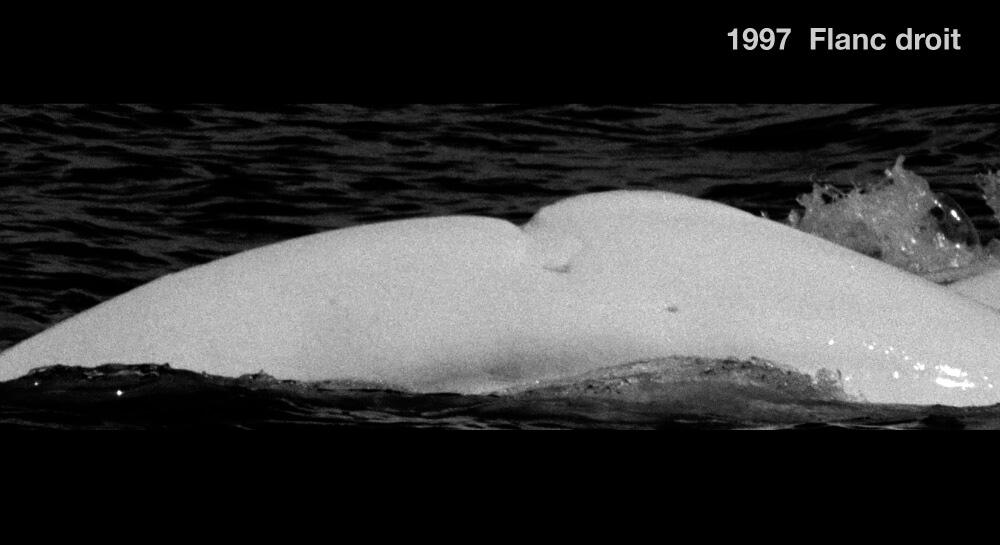Aile Joyeuse
Beluga

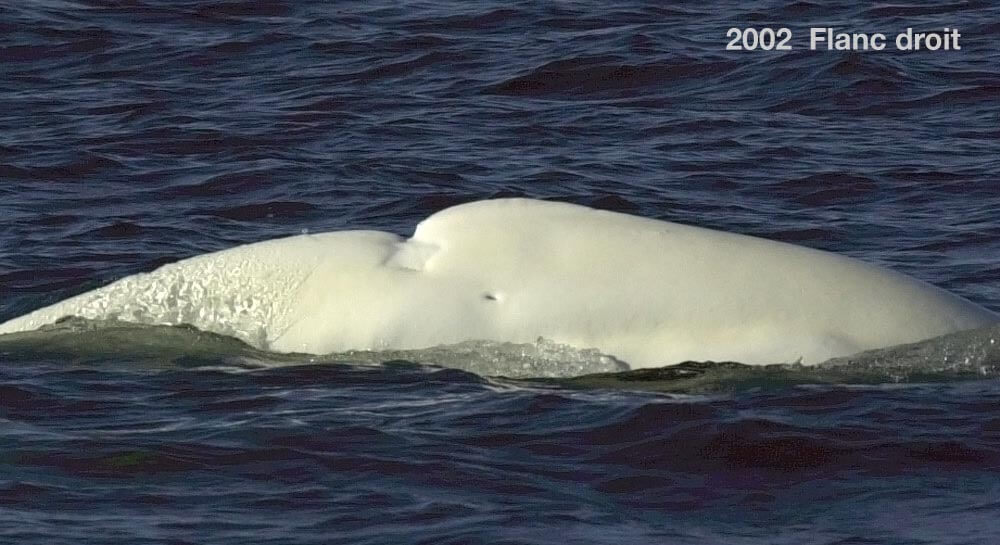
Adopted by Peinture Internationale
-
ID number
DL0040
-
Sex
Male
-
Year of birth
Before 1975
-
Known Since
1984
Distinctive traits
Aile Joyeuse is best recognized by the deep scar at the end of its dorsal ridge. It extends over both flanks, and next to it, on the right flank, is another scar and a small dot.
Life history
Aile Joyeuse was first photographed in 1987, but an initial series of photos shows that he may have been first observed in 1984. However, the quality of these photos leaves much to be desired. At the time of this encounter, he was completely white, so he would have been born before 1975.
His large size and social habits strongly suggest that he is a male. He is part of a network of males known as the “Downstream boys”, regularly observed between Tadoussac and Les Escoumins.
On several occasions, during “contacts” with Aile Joyeuse, we observe that he rises to the surface of the water with patches of mud on his body. We believe that he dives to the bottom to feed on benthic organisms buried in the sediment. To catch their prey, belugas have to stick their heads in the mud! They use their mouths to suck up prey.
Suction is their main method of capturing prey. Their teeth are only used to crunch prey, which they swallow without chewing. They feed mainly on bottom-dwelling fish and invertebrates. They also hunt in the water column and near the surface, swimming or treading against the current.
Observations history in the Estuary
Years in which the animal was not observed Years in which the animal was observed
Latest news
On August 16, 2004, we’re in the Bergeronnes area. Aile Joyeuse is present, among a group of about twenty belugas. He seems to have returned from the sea bed with some muddy mess ; has he just eaten?
Was this his last sighting? We haven’t seen him since 2004. Is it dead? Has it remained invisible to the eye of the researcher all this time? One thing is certain, his story remains a valuable source of information for our knowledge of this fragile population.
Sponsor
Peinture Internationale adopted Octave, Aile Joyeuse, Blanche-Neige, Oreillette, Patte d’Oie and Vagabonde (1988).


